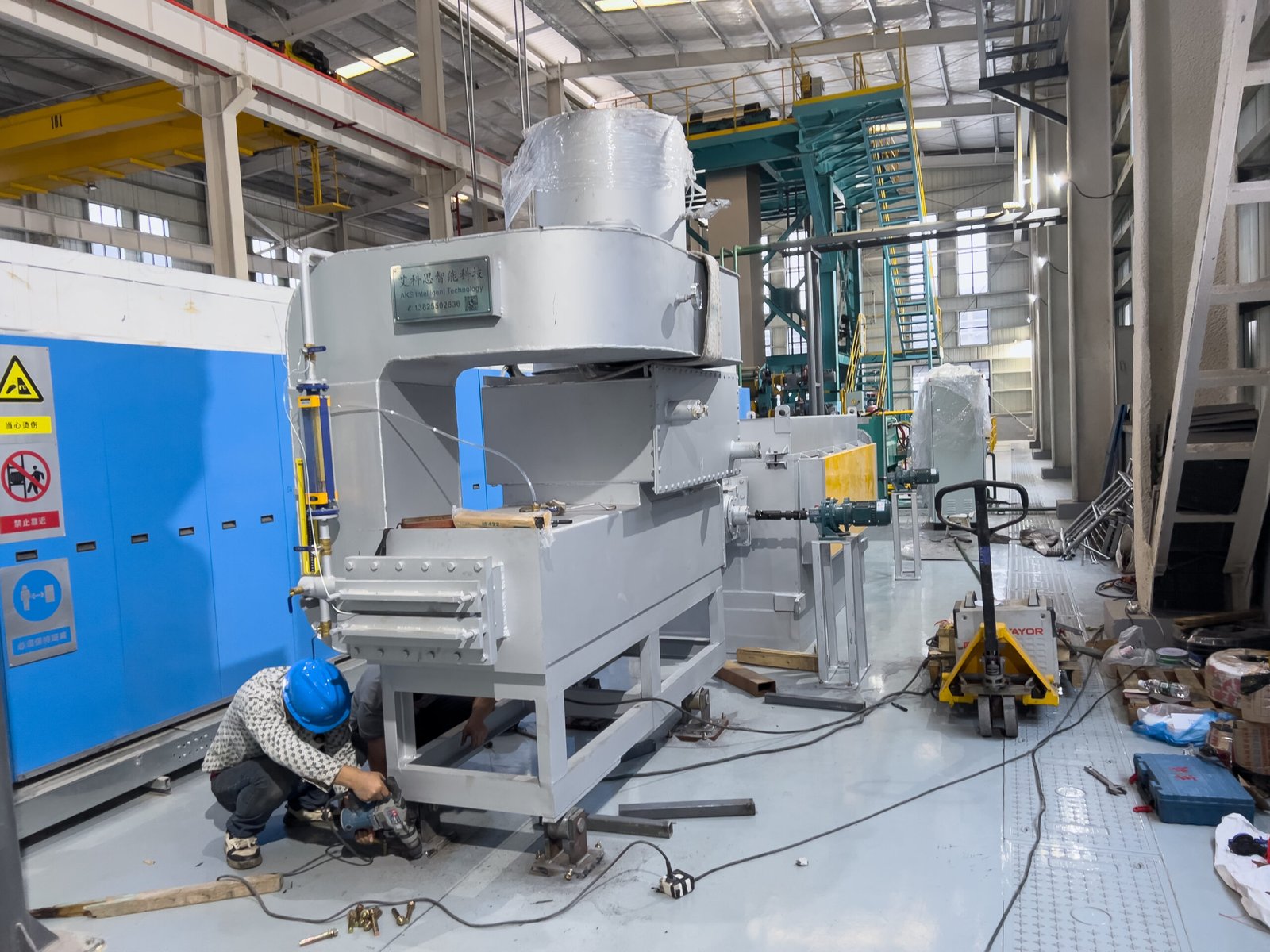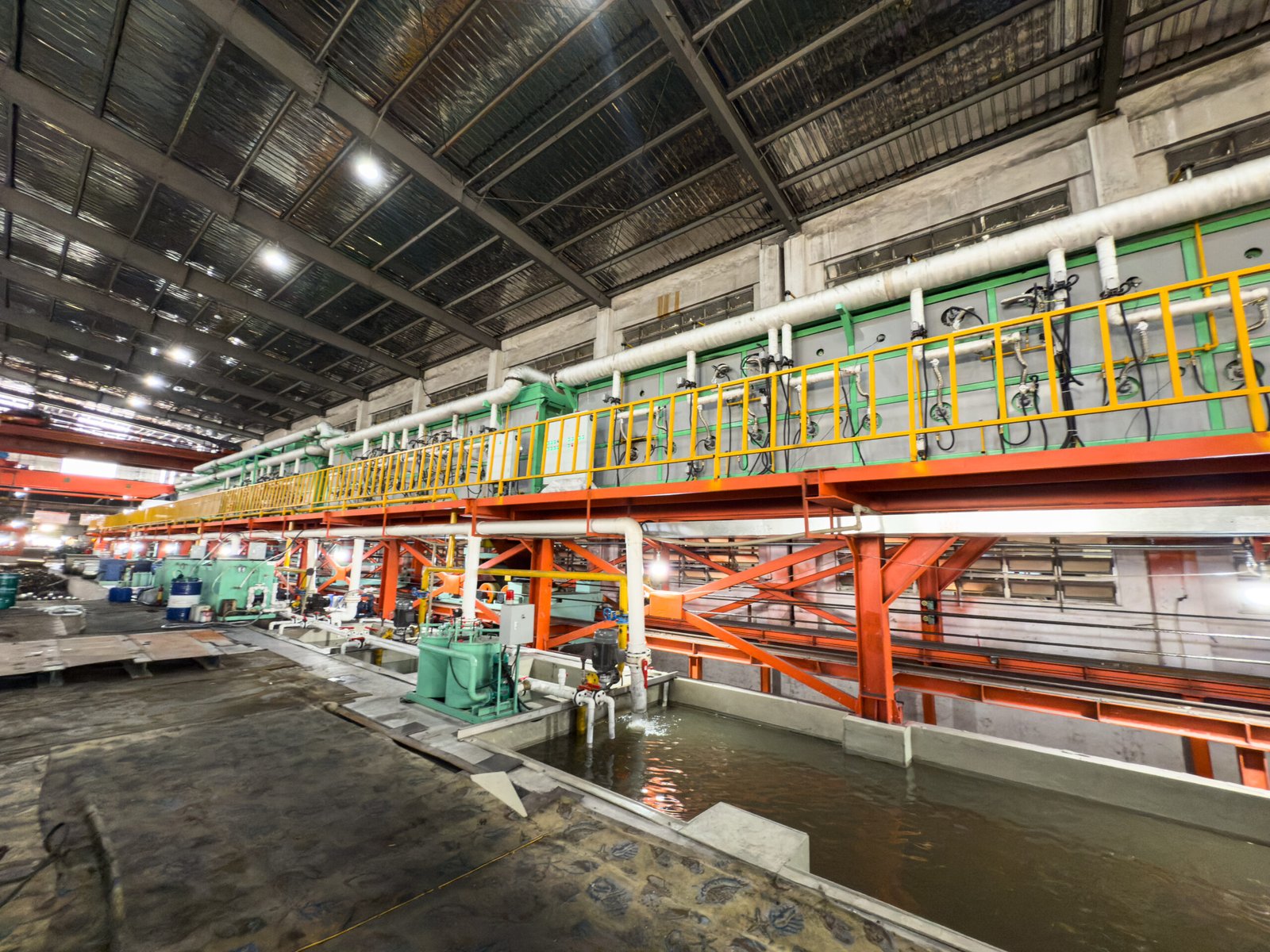How Are Vertical Furnaces Revolutionizing Bright Annealing for Ultra-Thin Stainless Steel Precision Strips?

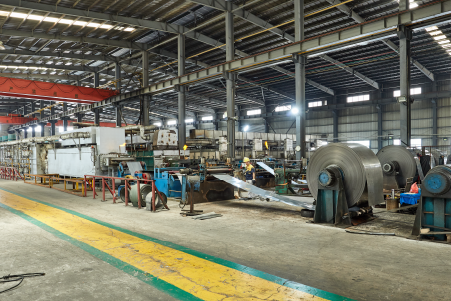
Are you struggling to maintain surface integrity and dimensional accuracy when annealing ultra-thin stainless steel strips? The slightest scratch, sag, or tension inconsistency can render an entire coil useless, wasting time and resources. We have pioneered a solution that leverages gravity, eliminating these issues for a perfect, bright finish every time.
Vertical furnaces are revolutionizing the bright annealing process for ultra-thin precision strips by utilizing a top-to-bottom material flow. This design eliminates physical contact with support rollers inside the heating chamber, thereby preventing scratches, catenary sag, and other surface defects common in traditional horizontal furnace setups.
The global demand for smaller, more powerful electronic devices and advanced components has placed unprecedented pressure on steel manufacturers. The challenge is no longer just about producing stainless steel; it’s about producing ultra-thin, flawless precision strips. This is where conventional technology hits a wall, and innovative solutions must take the lead. It's time to explore how a simple change in orientation—from horizontal to vertical—can redefine what's possible.
The shift toward vertical annealing isn't merely an incremental improvement; it represents a fundamental rethinking of the heat treatment process. Traditional horizontal furnaces1, while effective for thicker gauges, introduce multiple variables that are detrimental to strips thinner than 0.02 mm—catenary effect, roller-induced micro-scratches, and uneven tension control. Industry data suggests that for these delicate materials, defect rates can soar, impacting profitability. A 2023 report on specialty alloys2 indicated that surface imperfections are the primary cause of rejection for over 60% of ultra-thin strip coils. This forces us to ask a critical question: Is the conventional method truly serving the high-stakes world of precision manufacturing? The answer lies in analyzing the core mechanics of the annealing process itself.
What is bright annealing and why is it important for stainless steel precision strips?
Are you finding it difficult to achieve the soft, ductile, and mirror-like finish required for high-end stainless steel applications? This critical step, known as bright annealing, often determines the final quality and usability. We deliver a process that ensures impeccable surface quality and the precise metallurgical properties you need.
Bright annealing is a heat treatment process performed in a controlled atmosphere of hydrogen or a hydrogen-nitrogen mix, which prevents surface oxidation. It is crucial for stainless steel precision strips as it softens the material for further forming while creating a clean, bright, and highly reflective surface finish.
In my years of experience, I’ve seen countless clients from the automotive and electronics sectors struggle with the final stage of their product manufacturing. A recurring theme is the need for materials that are not only functionally sound but also aesthetically perfect. A precision-stamped part for a luxury appliance or a critical connector inside a smartphone cannot afford to have a dull or oxidized surface. Bright annealing is the cornerstone of this quality, as it recrystallizes the grain structure of the steel after cold rolling, relieving internal stresses and restoring ductility. Without it, the hardened steel would be too brittle for forming, and its surface would lack the corrosion resistance and visual appeal that stainless steel is known for. This process is where the true value of a premium stainless steel product is forged, transforming a raw, processed strip into a high-performance, finished material ready for the most demanding applications.
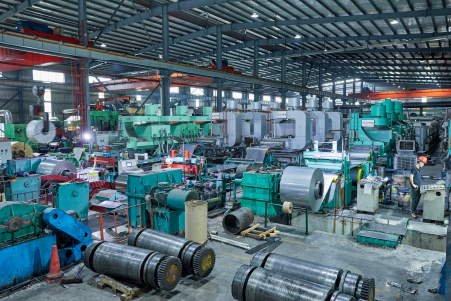
The importance of a flawless bright annealing process becomes even more pronounced when we consider the downstream effects on production lines. I recall a case with a client, a large manufacturer of electronic components in Southeast Asia, who was experiencing high failure rates in their stamping operations. The issue was traced back to inconsistent annealing in their previous horizontal furnace setup. The steel strips had microscopic hard spots and lacked uniform ductility, causing them to crack under the pressure of the stamping dies. This not only led to material waste but also caused significant downtime and damage to their expensive tooling. When they transitioned to a more controlled annealing environment, their production yield increased by nearly 20%. This story underscores that bright annealing is not just a finishing step; it is a critical control point that dictates the manufacturability, performance, and reliability of the final product. It ensures the steel is soft enough to be bent, stretched, and shaped without fracturing, a property that is absolutely non-negotiable in precision manufacturing.
The Role of Controlled Atmospheres in Preventing Oxidation
The "bright" in bright annealing comes directly from the prevention of oxidation, which is achieved by carefully controlling the furnace atmosphere. When stainless steel is heated to annealing temperatures, typically above 1000°C, the chromium at its surface readily reacts with any available oxygen, forming a dull, dark oxide layer. This not only ruins the aesthetic but also compromises the passive layer that gives stainless steel its signature corrosion resistance. To combat this, we enclose the entire process in a sealed muffle and purge it with a protective atmosphere, most commonly a blend of hydrogen (H₂) and nitrogen (N₂).
The hydrogen acts as a powerful reducing agent. It actively seeks out and reacts with any residual oxygen molecules within the furnace chamber, forming water vapor (H₂O), which is then safely vented. The nitrogen serves as a stable, inert carrier gas, helping to maintain positive pressure inside the furnace and prevent any outside air from leaking in. The precise ratio of this gas mixture, known as the dew point, is monitored and controlled with extreme precision. For ultra-thin strips used in applications like medical devices or precision electronics, even a minuscule amount of oxidation is unacceptable. Our systems use advanced gas analyzers and automated flow controls to maintain the optimal atmosphere, ensuring a truly bright, oxide-free surface straight out of the furnace.
This level of atmospheric control is what separates standard annealing from true bright annealing. I once worked with a customer producing high-end kitchenware who was struggling with cloudy blemishes on their finished products. Their existing furnace couldn't maintain a sufficiently low dew point, allowing trace amounts of moisture to cause surface discoloration. After upgrading to a furnace with a high-purity gas system and superior muffle integrity, they were able to produce a consistent, mirror-like finish that elevated their brand's perception of quality. It’s a testament to the fact that in bright annealing, the invisible atmosphere inside the furnace is just as important as the visible steel running through it.
Restoring Ductility and Relieving Internal Stresses
Beyond the surface finish, the primary metallurgical purpose of annealing is to reverse the effects of work hardening. When stainless steel is cold-rolled into ultra-thin strips, its crystal grain structure becomes elongated and filled with dislocations, making the material hard and brittle. While this hardness is sometimes desirable, it makes further processing, such as deep drawing, stamping, or bending, nearly impossible. The strip would simply fracture if any attempt was made to form it. Annealing solves this problem by heating the steel to its recrystallization temperature.
At this elevated temperature, new, equiaxed, and stress-free grains begin to form and grow, replacing the deformed, hardened grain structure. The result is a significant decrease in hardness and tensile strength, coupled with a dramatic increase in ductility and elongation. This transformation is fundamental to the usability of the steel. The process must be precisely controlled; if the temperature is too low or the time too short, recrystallization will be incomplete, leaving hard spots. If the temperature is too high or the time too long, the grains can grow too large, which can lead to a rough "orange peel" surface texture after forming.
For our clients in the automotive sector, who produce components like flexible exhaust connectors or sensor housings, this metallurgical consistency is paramount. They require a material that behaves predictably in their automated forming lines. We had a case where a supplier of stainless steel bellows was facing inconsistent spring-back effects in their products, a direct result of variable ductility in their raw material. By implementing a bright annealing furnace with zone-specific temperature control and a precise cooling system, they were able to achieve a uniform grain structure coil after coil. This stability in the material properties eliminated the downstream production headaches and ensured their final products met the stringent performance specifications required by automotive OEMs.
Enhancing Corrosion Resistance and Performance
A critical, yet often overlooked, benefit of proper bright annealing is the enhancement of the steel's inherent corrosion resistance. The protective quality of stainless steel comes from a very thin, invisible, and chemically inert passive layer of chromium oxide that forms naturally on its surface. When the steel is free of contaminants and oxide scales—as it is after a successful bright annealing process—this passive layer can form uniformly and robustly, providing maximum protection against rust and chemical attack.
If, however, the surface is left with the dark, thick oxide scale from an uncontrolled annealing process (or "black annealing"), this protective layer cannot form properly. Furthermore, any microscopic iron particles or contaminants left on the surface from rolling or handling can become sites for localized corrosion, such as pitting. The clean, pristine surface created by bright annealing provides the ideal canvas for the formation of a dense and stable passive film, ensuring the material delivers the long-term performance it was designed for.
This is especially important for products exposed to harsh environments, such as marine hardware or chemical processing equipment components. A client of ours who manufactures precision filters for the desalination industry relies on this enhanced corrosion resistance. Their filters, made from ultra-thin 316L stainless steel strips, are in constant contact with highly corrosive saltwater. A perfect bright annealed finish is not a cosmetic feature for them; it's a functional requirement that directly impacts the product's lifespan and reliability. By ensuring a contaminant-free and oxide-free surface, the annealing process we provide helps guarantee that their products withstand the elements and perform flawlessly for years, protecting critical infrastructure and maintaining their reputation for quality in a competitive global market.
How do vertical furnaces differ from traditional annealing methods?
Feeling frustrated by the scratches, catenary sag, and tension issues that plague your horizontal furnace when processing delicate, thin-gauge materials? These problems are inherent to the design. We've engineered a vertical solution that completely eliminates these contact-related defects, ensuring pristine quality for your most valuable products.
Vertical furnaces differ from traditional horizontal methods primarily in their orientation. The steel strip travels vertically, top to bottom, suspended by tension. This eliminates contact with hearth rollers inside the heating and cooling zones, preventing the scratches, contamination, and sagging common in horizontal furnaces seen in the steel industry.
When I first entered the industrial furnace industry, horizontal continuous annealing lines were the undisputed standard. They were workhorses, processing vast quantities of steel. However, as customer demands shifted towards thinner and more delicate materials, like precision strips for electronics and foils for batteries, the limitations of the horizontal design became glaringly obvious. The strip has to be supported by rollers or a hearth as it travels through the furnace. For a strip that is only a few microns thick, every single point of contact is a potential source for a scratch, a dent, or a subtle disruption in tension that leads to waviness. The "catenary effect3," where the strip sags between rollers, is another major headache, causing non-uniform heating and dimensional inaccuracies. These aren't minor flaws; they are critical defects that can lead to the rejection of an entire production run, a costly problem that the vertical furnace was specifically designed to solve.
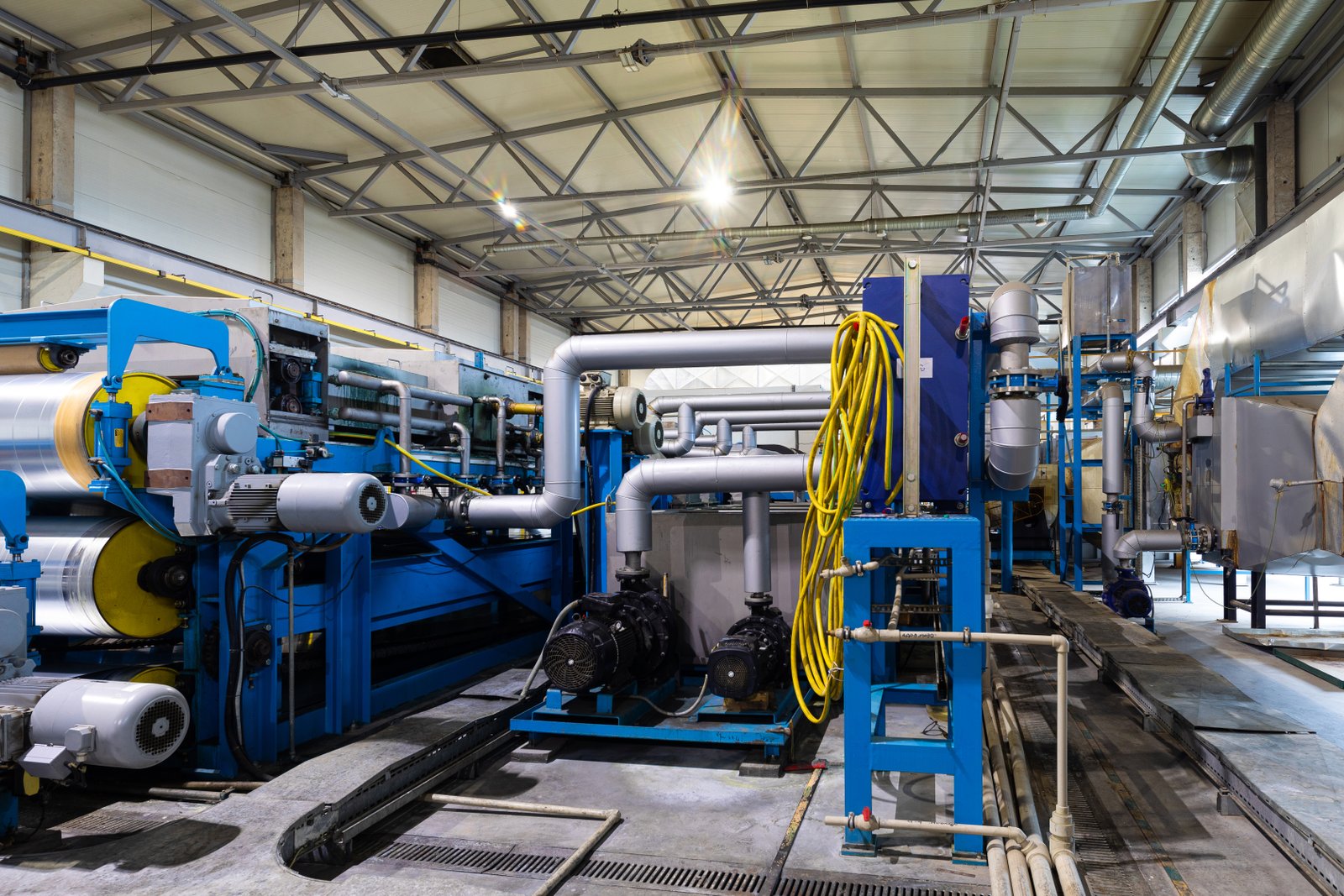
The fundamental advantage of the vertical furnace is its elegant use of gravity. By hanging the strip vertically, the need for any physical support within the most critical heating and rapid cooling sections is completely eliminated. The strip floats through the controlled atmosphere, touched only by the process gases themselves. This contactless processing is a game-changer for surface-critical materials. I remember a pivotal project with a manufacturer of high-reflectivity stainless steel4 for decorative applications. They were losing nearly a quarter of their output from their horizontal line due to fine, hairline scratches that were only visible after the final polishing. After installing a vertical bright annealing furnace, their surface defect rate dropped to virtually zero. This not only boosted their yield but also allowed them to enter new, more lucrative markets for mirror-finish products. This stark contrast in outcomes highlights that the choice between horizontal and vertical isn't just an operational preference; it's a strategic decision that directly impacts quality, profitability, and market competitiveness, especially in the growing sector of ultra-thin, high-value materials.
The Elimination of Contact-Induced Defects
In a traditional horizontal furnace, the stainless steel strip, especially when heated to malleable temperatures, is incredibly susceptible to damage. It travels over a series of rollers made from ceramic or high-temperature alloys. While these rollers are designed to be smooth, any microscopic abrasion, build-up of oxide dust, or slight misalignment can impart a repetitive scratch or mark along the entire length of the coil. For ultra-thin precision strips, which might be just 15 or 20 microns thick, these defects are not merely cosmetic; they can compromise the material's structural integrity and lead to failure in its final application, such as in a flexible electronic circuit.
The vertical furnace architecture elegantly sidesteps this entire problem. The strip is uncoiled at the top of a tower, fed downward through the heating and cooling chambers, and recoiled at the bottom. Throughout its entire journey within the furnace muffle, it is held under precise tension and never makes physical contact with any solid surfaces. This "contactless" path is the single most important factor in achieving the flawless, mirror-like finish required for premium applications in electronics manufacturing5. The result is a dramatic reduction in rejection rates and the elimination of costly secondary processes like polishing or buffing, which are often needed to remove roller marks.
I worked with a client producing battery foils, an application where surface uniformity is critical for performance. Their horizontal process was yielding inconsistent results, with subtle surface imperfections leading to variations in battery capacity. Switching to a vertical annealing line was transformative. They were able to produce foil with a pristine, uniform surface, which directly translated to a more reliable and higher-performing end product. This illustrates that for the growing markets in high-tech manufacturing, the absence of contact is not a luxury—it is a necessity for achieving the required quality standard.
Overcoming Catenary Sag and Ensuring Uniform Heating
Another inherent challenge in horizontal furnaces is the "catenary effect." As the strip travels between support rollers, it naturally sags under its own weight, forming a shallow curve or catenary. This sag might seem minor, but it has significant consequences. Firstly, it causes non-uniform tension across the width of the strip, which can lead to edge waviness or buckling defects. Secondly, the distance between the sagging strip and the heating elements above and below it is not uniform. The bottom surface, being closer to the lower heating elements, can get hotter than the top surface, leading to inconsistent metallurgical properties and potential thermal distortion.
Vertical furnaces inherently solve the catenary problem. Since the strip is held in a perfectly straight line by gravity and a precise tension control system, every part of the strip's surface is equidistant from the surrounding heating elements. This ensures exceptionally uniform heat transfer, both across the strip's width and through its thickness. The result is a perfectly flat product with a homogenous grain structure and consistent mechanical properties from edge to edge and beginning to end of the coil. This uniformity is crucial for precision stamping and forming operations, where even slight variations can disrupt automated processes.
A clear example of this comes from a customer in the medical device industry who manufactures micro-surgical instruments from stainless steel strips. Their horizontal furnace produced material with subtle inconsistencies that caused problems in their high-precision laser cutting process. After adopting a vertical furnace, they reported a significant improvement in dimensional stability and flatness, leading to higher cutting accuracy and less material waste. This demonstrates that the uniform heating environment of a vertical furnace directly enables the production of higher-quality, higher-precision components.
Comparative Analysis: Footprint, Energy, and Maintenance
When comparing furnace types, operational factors like factory footprint, energy consumption, and maintenance are critical business considerations. A horizontal furnace, by its nature, requires a long, linear floor space, which can be a significant constraint in factories where space is at a premium explored here6. A vertical furnace, while requiring significant height, has a much smaller ground footprint, freeing up valuable floor area for other production or storage needs.
Energy efficiency is another area where modern vertical furnaces can excel. While the initial concept of heating a tall tower might seem energy-intensive, our AKS vertical furnaces are designed with advanced energy-saving systems. We utilize multi-layered insulation and, most importantly, a waste heat recovery system. The hot protective atmosphere exiting the furnace is not vented to the atmosphere; instead, it is used to preheat the incoming cold strip before it enters the main heating chamber. This recycling of thermal energy significantly reduces overall gas or electricity consumption per ton of steel processed.
The table below provides a simplified comparison of key operational parameters, based on typical industry data for processing ultra-thin strips.
| Feature | Traditional Horizontal Furnace | AKS Vertical Furnace |
|---|---|---|
| Surface Quality | Susceptible to roller marks & scratches | Pristine, contactless finish |
| Strip Flatness | At risk from catenary sag & uneven heat | Excellent, uniform flatness |
| Minimum Thickness | Challenging for ≤ 0.05 mm | Ideal for ≤ 0.02 mm and thinner |
| Factory Footprint | Large, requires long linear space | Small, requires vertical height |
| Energy Efficiency | Moderate; heat loss from rollers | High; waste heat recovery system |
| Maintenance | Frequent roller inspection/replacement | Reduced; no rollers in heat zone |
Maintenance considerations also favor the vertical design. The rollers inside a horizontal furnace are high-wear components that require regular inspection and costly replacement. Their failure during a production run can cause catastrophic damage to the furnace lining and the product. Vertical furnaces, having no such components in the hot zone, have significantly lower maintenance requirements and greater operational reliability, leading to more uptime and higher overall productivity.
What innovative features do vertical furnaces offer for processing ≤ 0.02 mm precision strips?
Are you pushing the boundaries of material thinness, only to be limited by your annealing technology? Processing strips as thin as 0.02 mm requires a level of control that traditional furnaces simply can't provide. We integrate cutting-edge features that make processing these ultra-thin materials not just possible, but repeatable and reliable.
Vertical furnaces offer innovative features crucial for ultra-thin strips, including advanced tension control systems using dancer rolls and load cells, contactless cooling jets for rapid and uniform cooling without distortion, and high-purity atmospheric controls that ensure a perfectly bright, oxide-free surface on delicate materials.
When a client came to us with the challenge of annealing a 0.015 mm thick specialty alloy strip for a new generation of microelectronics, I knew their existing equipment wouldn't stand a chance. At that thickness, the strip behaves more like a delicate foil than a sheet of steel. The slightest fluctuation in tension could stretch or snap it, and even minimal thermal shock during cooling could cause irreversible warping. This is where the innovation within our vertical furnaces truly shines. It's not just about the vertical orientation; it's about the ecosystem of technologies we've built around that core concept7. We're talking about dancer roll systems that can respond to tension changes in milliseconds and jet cooling plenums engineered with computational fluid dynamics to ensure every square millimeter of the strip cools at the exact same rate. These aren't just features; they are essential enablers for the next generation of advanced materials.
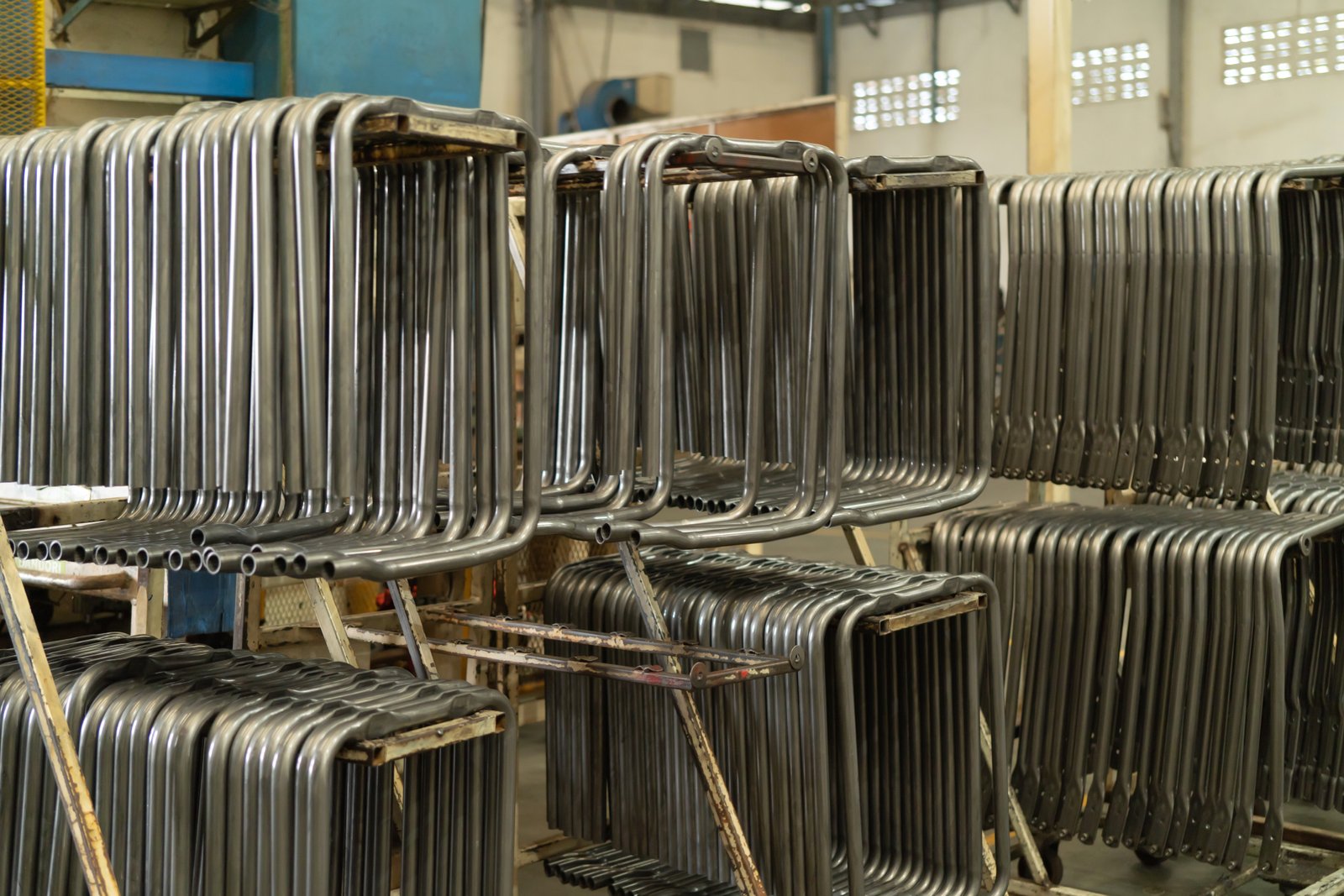
The journey of an ultra-thin strip through a vertical furnace is a symphony of precise, automated control. Imagine a material so light that the slightest puff of air could disturb its path. Our furnaces are designed as completely sealed systems, where every variable is meticulously managed. The advanced tension control is paramount. We use a combination of high-precision load cells, sophisticated drive motors, and a dynamic dancer roll system that acts as a buffer, absorbing any minute speed mismatches between the uncoiler and recoiler. This guarantees that the tension on the strip remains constant and at the exact low level required, preventing any possibility of stretching or deformation. Furthermore, for these ultra-thin gauges, the cooling process is just as critical as the heating. Our advanced cooling systems use precisely directed jets of the protective atmosphere gas to cool the strip rapidly but uniformly, locking in the desired metallurgical structure without introducing thermal stress or warping the incredibly flat, delicate surface. It’s this fusion of mechanical and thermal precision8 that allows our clients to confidently and consistently produce the world’s most advanced precision strips.
Ultra-Precise Tension Control Systems
For a stainless steel strip with a thickness of 0.02 mm or less, the line between proper tension and catastrophic failure is incredibly fine. Too much tension, and the strip will stretch, reducing its width and thickness and altering its mechanical properties—a phenomenon known as "necking." Too little tension, and the strip will flutter or wander as it travels through the furnace tower, potentially touching the sides of the muffle and causing fatal defects. Traditional drive systems lack the responsiveness to manage these delicate materials effectively. Modern vertical furnaces, therefore, employ highly sophisticated closed-loop tension control systems.
These systems are typically anchored by a "dancer roll." This is a lightweight roll in a movable frame, often positioned near the top or bottom of the furnace structure. The strip is looped around this roll, and the frame's position is continuously monitored by sensors. If tension momentarily increases, the dancer frame moves to release more strip into the system, and if tension decreases, it moves to take up the slack. This physical buffer works in tandem with high-precision load cells that directly measure the force on the strip in real-time. The data from both the dancer position and the load cells is fed into a PLC (Programmable Logic Controller), which instantly adjusts the speed of the bridle rolls and the uncoiler/recoiler motors to maintain the tension setpoint with incredible accuracy, often to within a few Newtons.
I recall a project with a manufacturer of precision springs for the watch industry. They were working with a 0.018 mm strip, and their previous attempts at annealing resulted in an unacceptable 30% scrap rate due to tension variations. After we commissioned a vertical furnace equipped with a high-response dancer system and digital drive controls, their scrap rate fell to below 2%. This level of control is not just an improvement; it's what makes the production of such ultra-thin, high-value materials commercially viable. It ensures that the dimensional integrity of the strip is perfectly preserved from the start of the coil to the very end.
Contactless Jet Cooling for Thermal Stability
After the strip has been heated to the precise annealing temperature, it must be cooled rapidly to lock in the fine-grained, ductile microstructure. However, this cooling process presents a major challenge for ultra-thin materials. Traditional cooling methods, such as passing the strip through a water-jacketed chamber, can result in non-uniform cooling. The edges might cool faster than the center, or one side might cool faster than the other, introducing internal stresses that cause the strip to warp, buckle, or develop wavy edges. For a 0.02 mm strip, such defects are impossible to correct.
To overcome this, advanced vertical furnaces utilize contactless jet cooling technology9. As the strip exits the heating section, it enters a cooling plenum. Inside this chamber, arrays of strategically placed nozzles spray high-velocity, temperature-controlled protective gas (the same H₂/N₂ mixture from the furnace atmosphere) onto both surfaces of the strip. The design of these plenums is often optimized using Computational Fluid Dynamics (CFD) modeling to ensure that the gas flow is perfectly uniform across the entire width of the strip. This method extracts heat rapidly and evenly, quenching the material without any physical contact and, crucially, without creating thermal gradients that would lead to distortion.
A client producing metal diaphragms for pressure sensors faced this exact issue. The performance of their sensors depended on the absolute flatness of the diaphragm. Their old annealing line produced material with subtle waviness that had to be corrected with a costly and often damaging leveling process. The introduction of a vertical furnace with a multi-zone jet cooling system was a breakthrough. It gave them the ability to control the cooling rate with incredible precision, producing a strip that was perfectly flat right off the coil. This not only improved their product's performance but also streamlined their entire manufacturing workflow by eliminating a secondary processing step.
High-Purity Atmosphere and Muffle Integrity
When annealing ultra-thin stainless steel, the purity of the protective atmosphere10 is more critical than ever. The surface-area-to-volume ratio of a 0.02 mm strip is enormous, meaning even trace amounts of oxygen or water vapor in the furnace can cause significant surface discoloration or incomplete reduction of surface oxides. This can be detrimental for applications in electronics, where surface conductivity is key, or in medical implants, where surface purity is non-negotiable. Therefore, state-of-the-art vertical furnaces are engineered for ultimate atmospheric integrity.
This starts with the furnace muffle—the sealed chamber through which the strip travels. Our muffles are constructed from special high-temperature alloys like Inconel or RA330 and are continuously welded to be completely gas-tight. All entry and exit points for the strip are equipped with advanced sealing systems, often using a combination of fiber seals and a nitrogen gas curtain to prevent any intrusion of ambient air. The protective gas itself is supplied from a high-purity source and is often passed through an online purifier to remove any residual contaminants before being injected into the furnace.
We use sensitive oxygen and dew point analyzers to continuously monitor the atmosphere inside the muffle, with the data feeding back into the control system to automatically adjust gas flow rates. This ensures that the atmosphere remains exceptionally dry and oxygen-free (often with a dew point below -60°C). A customer manufacturing components for semiconductor fabrication equipment highlighted the importance of this. Any microscopic oxide on their parts could lead to contamination in a cleanroom environment. The consistent, ultra-pure atmosphere of their AKS vertical furnace gave them the confidence and the verifiable data to certify their products for the highest standards of cleanliness, opening up a highly lucrative market segment for their business.
How is the use of vertical furnaces impacting the efficiency and quality of stainless steel manufacturing?
Are your production yields suffering due to the inherent limitations of your current annealing process? High scrap rates, inconsistent quality, and excessive energy use can erode your profitability. By adopting vertical furnace technology, manufacturers are seeing transformative gains in both product quality and operational efficiency.
The use of vertical furnaces is significantly impacting stainless steel manufacturing by drastically reducing defect rates, which boosts material yield and lowers scrap costs. This technology also enhances energy efficiency through waste heat recovery and enables higher-value production by achieving the superior surface quality and flatness required for advanced applications.
From my perspective as a provider of these systems, the impact is crystal clear and can be quantified on the balance sheet. I often begin conversations with potential clients by asking about their Overall Equipment Effectiveness (OEE), a pivotal KPI that measures the productivity and availability of industrial processes11. More often than not, the annealing line is a major bottleneck due to quality-related downtime and rework. A horizontal furnace running thin-gauge material might operate with a first-pass yield of only 85-90%. By switching to a vertical furnace, which eliminates the primary causes of defects, that number can climb to 98-99%. This isn't just an incremental improvement. For a medium-sized processor running several thousand tons a year, that percentage point increase translates into hundreds of thousands of dollars in saved material and increased output, without needing to run the line any faster. It’s a direct and powerful impact on the bottom line.
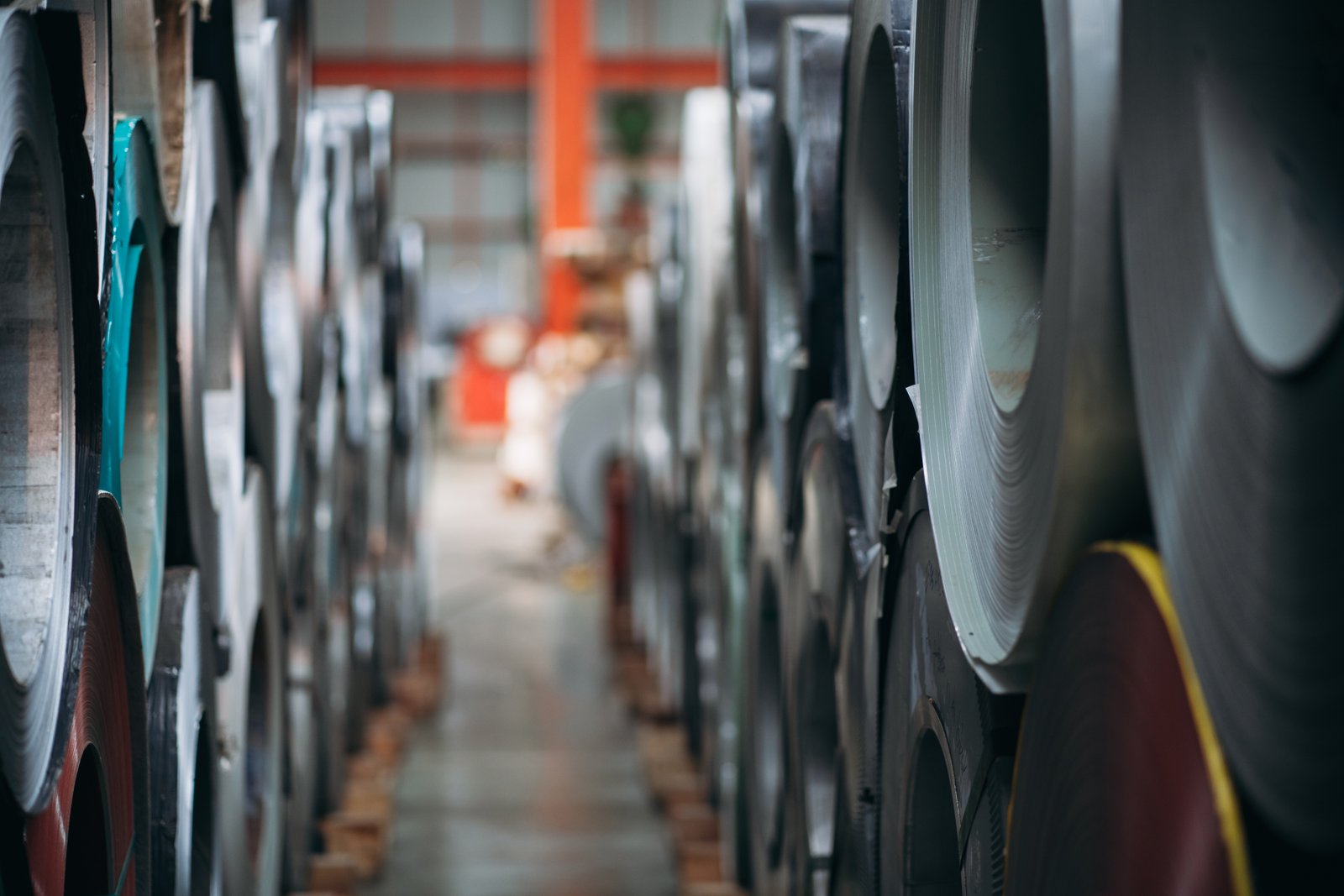
Beyond the immediate financial gains from reduced scrap, the adoption of vertical furnaces is fundamentally changing the business models of the manufacturers who use them. It's an enabling technology. Suddenly, a company that was previously competing in the crowded market for standard-grade stainless steel can now produce premium, mirror-finish, or ultra-flat precision strips. This allows them to move up the value chain and cater to more demanding and profitable industries like aerospace, medical devices, and high-end electronics12. I’ve personally witnessed this transformation. A long-standing customer of ours, who traditionally supplied stainless steel for kitchen appliances, invested in a vertical bright annealing line. Within two years, they had become a certified supplier of precision strips for a major electric vehicle battery manufacturer. Their production hadn't just become more efficient; their entire market position had evolved. This technology doesn't just improve how steel is made; it redefines what can be made and who can make it, driving innovation and competitiveness across the industry.
Drastic Reduction in Scrap Rates and Material Waste
In any manufacturing operation, material yield is a primary Key Performance Indicator (KPI). For stainless steel strip producers, scrap generated during the annealing process represents a direct financial loss. The material has already been melted, cast, and cold-rolled, accumulating significant cost at each step. Defects like scratches, roller marks, warping, and inconsistent mechanical properties introduced during the final anneal can render a coil worthless, forcing it to be sold as scrap at a fraction of its value. Traditional horizontal furnaces, as discussed, are a major source of such defects when processing thin or surface-critical materials.
The implementation of a vertical furnace directly attacks this problem at its source. By eliminating contact with rollers and ensuring uniform heating and cooling, the technology prevents the very defects that cause material to be rejected. I recently analyzed post-installation data with a client who processes high-gloss 430 stainless steel for decorative trim. Their horizontal furnace line had an average scrap rate of 8% due to fine scratches and a subtle "chatter" pattern from the rollers. After six months of operation with their new AKS vertical furnace, their scrap rate for the same product had fallen to just 0.7%.
This near-elimination of process-induced defects provides a massive boost to profitability. It's not just the value of the saved material itself; it's also the reduction in labor and energy spent on processing material that will ultimately be scrapped. Furthermore, it simplifies quality control processes, as the output is consistently high-quality, requiring less inspection and rework. This improvement in yield flows directly to the bottom line and provides a very rapid return on the initial capital investment.
Enhanced Energy Efficiency and Lower Carbon Footprint
In today's climate of rising energy costs and increasing environmental scrutiny, operational efficiency is intrinsically linked to energy consumption. Industrial furnaces are, by nature, energy-intensive pieces of equipment. However, the design of a modern vertical furnace incorporates several key features that make it significantly more energy-efficient than older, traditional designs, especially those of our competitors. The vertical orientation allows for a more compact and effectively insulated heating chamber, minimizing thermal loss to the ambient environment13.
The most significant feature, however, is the integration of an efficient waste heat recovery system. In a typical furnace, hot gases and the protective atmosphere are simply vented after they have served their purpose. In our advanced vertical furnace design, the hot atmosphere exiting the bottom of the cooling section is captured and circulated through a heat exchanger. The incoming cold stainless steel strip passes through this heat exchanger before it even enters the primary heating chamber. This process preheats the strip using energy that would otherwise have been wasted. As a result, the main heating elements require substantially less energy to bring the strip up to the final annealing temperature.
Based on performance data from our installations, this waste heat recovery can reduce total energy consumption by up to 20% compared to a furnace without such a system. For a large-scale producer, this translates into enormous annual savings on electricity or natural gas bills. A client in Europe, facing stringent carbon taxes, found that this feature was a critical factor in their decision. The lower energy consumption not only saved them money but also significantly reduced their plant's carbon footprint, helping them meet regulatory requirements and enhance their corporate image as a sustainable manufacturer.
Unlocking New Markets with Superior Quality Products
Perhaps the most profound impact of vertical furnace technology is its ability to act as a strategic enabler. It empowers manufacturers to break out of the highly competitive commodity market and enter lucrative, high-growth sectors that demand superior material quality. Industries like consumer electronics, medical technology, renewable energy (e.g., solar panel components, battery foils), and aerospace have incredibly stringent requirements for surface finish, flatness, and dimensional tolerance that simply cannot be met reliably with conventional horizontal annealing14.
By investing in a vertical furnace, a steel processor gains the capability to produce these high-value-added products. The ability to deliver a flawless, mirror-bright finish opens doors to customers in the decorative and architectural markets. The capacity to produce perfectly flat, stress-free ultra-thin strips is essential for manufacturers of precision electronic components, like connectors, terminals, and EMI shielding. The consistent metallurgical properties enable the production of critical performance components like springs, diaphragms, and bellows.
I have seen this strategic shift firsthand. A client in India was a well-respected producer of standard stainless steel strips for general fabrication. They saw an opportunity in the burgeoning domestic electronics manufacturing sector but lacked the technical capability to meet the required quality standards. After a comprehensive consultation, they installed an AKS vertical bright annealing line. This investment transformed their business. They are now a leading supplier of precision strips to several multinational electronics firms operating in the region. Their profit margins are higher, their business is more resilient, and they are recognized as an industry leader in quality and innovation. This is the ultimate impact: the technology doesn't just improve an existing process; it creates entirely new business opportunities.
What future advancements can be expected in the vertical furnace technology for ultra-thin stainless steel processing?
As we look toward the future, what's next for annealing technology? The pace of innovation isn't slowing down, and the demands for even thinner, stronger, and smarter materials will continue to grow. We are actively developing the next generation of furnaces that will meet these future challenges head-on.
Future advancements in vertical furnace technology will likely focus on integrating Industry 4.0 concepts such as AI-driven process control, enhanced sensor technology for real-time metallurgical analysis, and further improvements in energy efficiency, including the potential use of hydrogen as an industrial furnace fuel source.
The future I envision is one where the furnace is no longer just a piece of heating equipment but a fully integrated, intelligent node in the manufacturing ecosystem. Imagine a system where AI algorithms analyze data from hundreds of sensors—monitoring tension, temperature, atmosphere, and even the acoustic signature of the strip as it runs—to predict the final grain structure and surface quality in real-time. This system wouldn't just react to deviations; it would proactively adjust process parameters to prevent defects before they ever occur. We are already experimenting with advanced sensor suites and machine learning models in our R&D facility. The goal is to create a "self-optimizing" furnace that consistently produces perfect quality material, reduces the need for manual oversight, and provides a wealth of data for continuous process improvement. This is the direction we are headed.
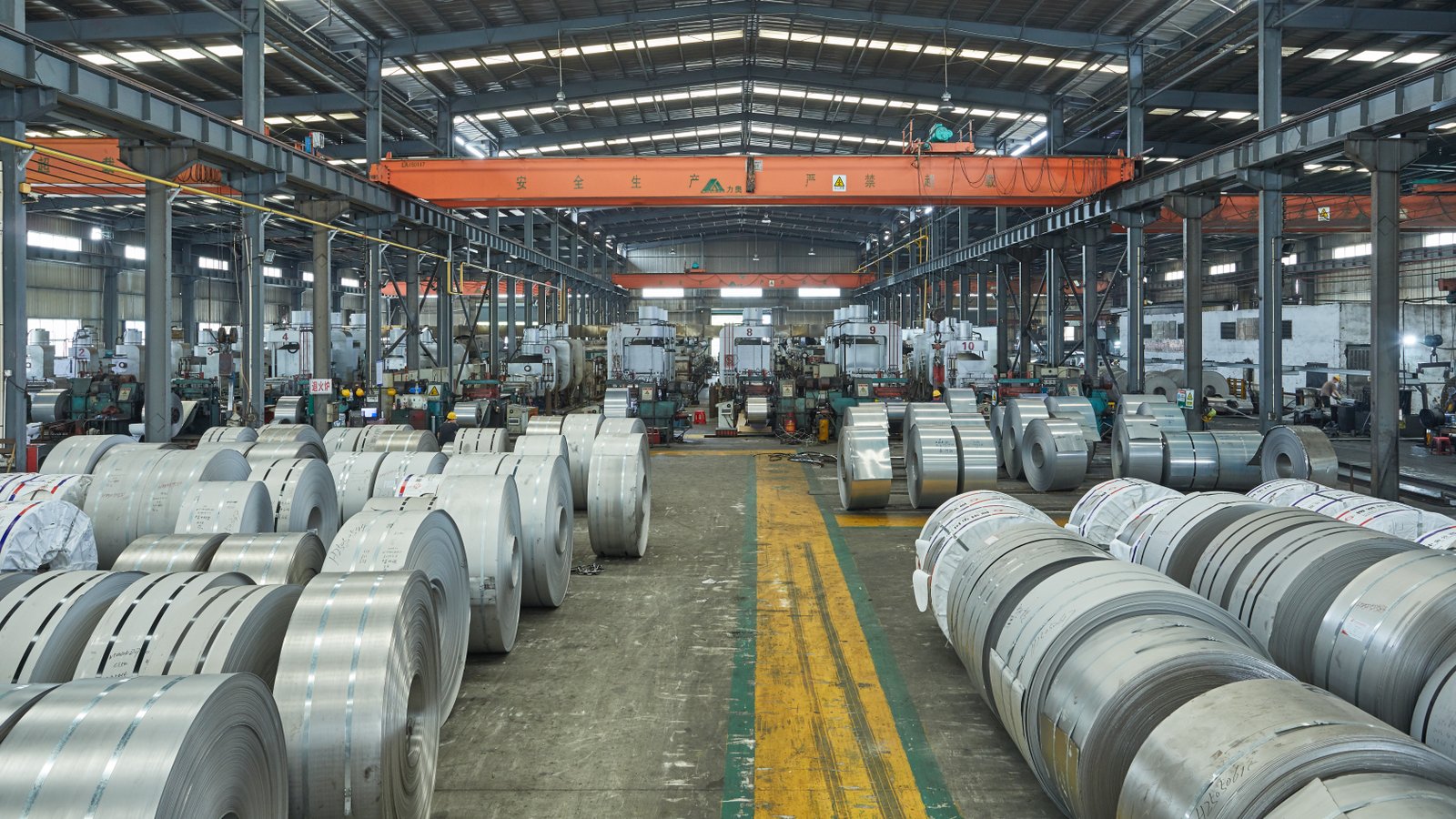
The evolution of vertical furnace technology will be driven by the convergence of advanced materials science and digital transformation. We anticipate a much deeper integration of in-line monitoring systems. Think beyond simple temperature and tension sensors. We are exploring non-contact optical and electromagnetic sensors for in-line metallurgical analysis15, which can be placed inside the furnace to provide real-time feedback on the strip's metallurgical phase transformation and grain size as it happens. This would allow for an unprecedented level of control, enabling the furnace to tailor the annealing cycle on the fly to achieve highly specific and customized material properties for niche applications. Another major frontier is sustainability. As the world moves toward a greener economy, we are researching ways to further reduce the carbon footprint of the annealing process. This includes developing furnaces that can be heated directly with green hydrogen, as well as more sophisticated waste heat recovery systems that can capture and repurpose an even greater percentage of thermal energy, pushing the boundaries of what is possible in efficient and intelligent manufacturing.
Integration of AI and Machine Learning for Predictive Control
The next frontier in furnace control is the shift from reactive to predictive systems, powered by Artificial Intelligence (AI) and Machine Learning (ML). Currently, control systems react to deviations from a setpoint. In the future, they will predict potential deviations and make proactive adjustments. This will be achieved by feeding vast amounts of data from an expanded array of sensors into a sophisticated AI model. The system will learn the complex relationships between dozens of variables—like incoming strip hardness, ambient humidity, and minor fluctuations in gas purity—and their ultimate effect on the final product quality.
For example, the AI could detect a subtle change in the vibration signature of the uncoiler, predict that this might lead to a microscopic tension fluctuation in 30 seconds, and preemptively adjust the dancer roll and bridle motors to compensate before the fluctuation even occurs. Similarly, by analyzing real-time data from optical surface scanners at the exit, an ML algorithm could identify the root cause of a recurring, barely-perceptible surface anomaly and suggest a precise adjustment to the temperature profile in a specific heating zone to eliminate it on subsequent runs. This "digital twin" approach, where a virtual model of the furnace runs in parallel with the physical one, will allow for continuous optimization and self-correction.
This move towards intelligent automation will reduce the reliance on highly experienced operators to manually tweak parameters. It will democratize high-quality production, enabling more consistent results across different shifts and different plants. For our clients, this means higher yields, less troubleshooting, and the ability to produce increasingly complex materials with confidence. We are already in the process of developing these algorithms, building the massive datasets required to train them effectively, and designing the next-generation control platforms that can execute these intelligent commands.
Advanced In-Line Metrology and Real-Time Feedback
Currently, the ultimate confirmation of quality—detailed analysis of grain structure, hardness, and tensile strength—is typically performed offline in a laboratory after the coil has been fully processed. This retrospective approach means that if a problem occurred, an entire coil could be produced before the issue is even identified. The future of vertical annealing lies in integrating advanced metrology tools directly into the process line for real-time feedback. This involves moving the laboratory onto the production floor.
We are actively researching and partnering with sensor technology companies to integrate non-contact measurement systems that can operate within the harsh environment of the furnace line. Imagine laser ultrasonic sensors that can measure the grain size of the steel strip in real-time as it exits the heating zone, or eddy current sensors that can provide an immediate reading of the material's hardness and ductility. This data would be fed back into the PLC in a closed loop, allowing the system to instantly confirm that the desired metallurgical transformation has been achieved or make micro-adjustments to the annealing cycle if it has not.
This technology would be transformative for producers of the most critical materials. For a company making automotive airbag canisters or high-pressure fuel lines, having 100% real-time verification of material properties for every meter of steel produced would be a monumental leap in quality assurance. It would move the quality paradigm from statistical process control to deterministic, verified manufacturing. This would not only enhance safety and reliability but also provide customers with a complete digital record of the material's properties, creating a new standard for traceability and quality certification in the industry.
Pushing the Boundaries of Energy Sources and Sustainability
As global industry faces increasing pressure to decarbonize, the technology behind industrial heating will undergo a fundamental transformation. While our current furnaces are highly efficient, the future will demand even more sustainable solutions. One of the most promising avenues of research is the use of green hydrogen as a primary fuel source for heating, replacing natural gas and reducing direct CO₂ emissions to zero. This presents significant engineering challenges, as hydrogen combustion has different thermal properties than natural gas, requiring redesigned burners and control systems. However, as green hydrogen becomes more available and cost-effective, we aim to be at the forefront of this transition, offering hydrogen-ready furnaces.
Beyond the fuel source, we are also exploring more advanced methods of heat management. This includes next-generation insulation materials derived from aerospace that can further reduce passive heat loss. We are also conceptualizing "energy-symbiotic" systems, where the massive amount of waste heat generated by the furnace is not just used for preheating the strip but is captured and converted into electricity using thermoelectric generators or used to power other plant processes, like absorption chillers for facility cooling.
This holistic approach to energy management is central to our vision for the furnace of the future. A client's decision to invest will be based not only on the quality of the product it produces but also on its operational cost and its environmental impact. By pioneering these sustainable technologies, we can offer our clients a competitive advantage, helping them to lower their long-term energy expenditures, meet increasingly strict environmental regulations, and align their brand with the principles of a circular, green economy. The goal is to create a furnace that is not just efficient in isolation, but is an integrated and sustainable part of a modern, intelligent factory.
Conclusion
Ultimately, the shift to vertical furnaces is not just an upgrade; it's a strategic necessity for competing in the modern steel industry. By eliminating defects, boosting efficiency, and unlocking the potential to produce high-value materials, this technology is revolutionizing what's possible for manufacturing ultra-thin precision strips.
-
Discover why traditional horizontal furnaces struggle with ultra-thin stainless steel strips ↩
-
See recent research on leading rejection causes in ultra-thin steel coil manufacturing ↩
-
Understand the catenary sag and its impact on product quality ↩
-
Discover features and industries using high-reflectivity stainless steel ↩
-
See the role of flawless surface in electronic and high-tech product reliability ↩
-
Find out how vertical furnaces save space in industrial settings ↩
-
Explore breakthrough technologies shaping advanced vertical furnace performance ↩
-
Discover why integrated control of mechanics and temperature matters for thin strip quality ↩
-
Understand the benefits and function of jet cooling for flatness and metallurgical properties ↩
-
See how atmospheric control impacts the surface quality of electronic- and medical-grade materials ↩
-
Discover how OEE is calculated and its impact on manufacturing productivity and quality ↩
-
Explore the specific product demands and how vertical furnaces enable higher market positioning ↩
-
See technical insights into how furnace orientation reduces energy waste and improves efficiency ↩
-
Understand required standards and why vertical furnaces are suited to meet these industry needs ↩
-
Explore technologies for real-time, in-line quality monitoring and control in steel annealing lines ↩

